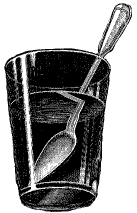BACKGROUND:
Physics helps us explain the world
around us. There are many things occurring in the world that we
can't explain. This unit has students investigating the properties of
light. They will not understand the physics of light, but will begin the
process of becoming familiar with some of the bizarre things light can
and cannot do.
Light can be controlled by lenses,
prisms, and mirrors. Light moves. Lenses are important in our everyday
life. Many people wake up putting on eyeglasses or contacts. People who
take pictures use lenses in the cameras. Lenses are in magnifiers,
lighthouses, microscopes, telescopes, binoculars and projectors.
Nature
has found a natural way to create a lens system in most organisms (eyes)
so they can see. The word lens comes from the Latin word
"lentil," (a bean used in soup that is biconvex.)
A prism causes light to change direction or refract
as it moves through the prism. Light when it travels through
different substances can also refract. It appears to our
eyes as if the object is bending, but it is only "light"
playing tricks with our eyes.
A mirror allows light to
"bounce" or reflect from the surface of the mirror. We see ourselves in
the mirror because light reflects or bounces from the mirror and the
image is captured by lenses in our eyes.
Light
can also diffract when it goes through a small slit.
The light particles spread from the center into distinct packages.
Many people do not realize that light
is actually a real phenomenon. It moves, it changes directions, and it
is part of a branch of physics called the electromagnetic wave spectrum.
PROCEDURE:
-
Bring in some
lentils for students to see where the word "lens" comes from.
Many students (unless from Mediterranean area) are not familiar with
lentils as a food source.
-
Put a spoon in a
glass of water is about 1/3 full. Let the students view the spoon
through the side. The light makes it refract. Students should be
familiar with looking at a mirror or their image in a lake, which is a
"reflection."
-
The worksheet goes
over the words "reflect" and "refract." Reflect is
light actually deflecting backward or bouncing. Refract is light passing
through a substance and changing its course of direction. The worksheet
pictures identify the terms reflect or refract. Instruct students to
color each picture and trace over the word. A spoon in water when viewed
from the side looks bent. This is refraction. A mirror reflects an
image. Water will also reflect an image. Light through a lens is
refracted.
-
Read Light Magic to student. The story
reinforces the vocabulary words. The story also gives students more
information about light including the reason for rainbows and other
visual effects caused by mirrors.